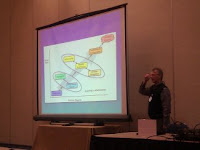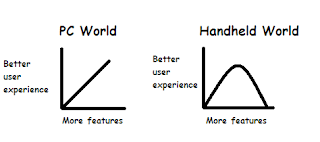Context, Content and Collaboration: Keys to Successful mLearning #mLearnCon
Clark Quinn (@Quinnovator) and Richard Clark (@rdclark) presented session 201 at mLearnCon on “Context, Content and Collaboration: Keys to Successful mLearning”.
There was a lot of information covered in this session, but here are just a few of the takeaways:
- 63% of mobile workers prefer to use a smart phone for work-related tasks (iPass report on mobile workforces – Robert Gadd)
- We ‘learn’ in order to accomplish things, it’s not about learning but performance
- Sales people are the most mobile but least collaborative due to the competitive environment they are in. In this case they may need an external contact or concierge.
- It’s always good to put together a formal introduction to any new tool, skills or tasks
- MockApp has a free ppt / Keynote template for mobile course development
- Mobile games are a powerful learning tool
My notes from this session:
Devices – what do they all have in common?
- Input
- Connectivity – bluetooth, wifi, GSM/CDMA, cable
- Sensing – GPS, camera, audio, gyroscopes
- Output
Cognitive augmentation
How do these support learning?
Role Cognitive Mobile
Intro Activate Motivating example
Concept Reconceptualize New model
Example Recontextualize Another example
Practice Reapply A new problem
Feedback Reflect Evaluation rubrics
Clark Quinn’s idealized model for supporting formal/informal learning:
Quinn and Clark suggested systematically filling out this matrix as relevant to the audience:
Better User experience – PC vs. mobile
A point made here was that in the second diagram for hand-held, the word ‘features’ on the x-axis could be replaced by the word ‘content’ and still ring very true.
The final diagram in the session depicted the graph of Technical Elegance vs. Design Depth and instead of re-creating this time it is pictured above in the photo above with Clark Quinn.
You can find the full slide deck at learnlets.com








